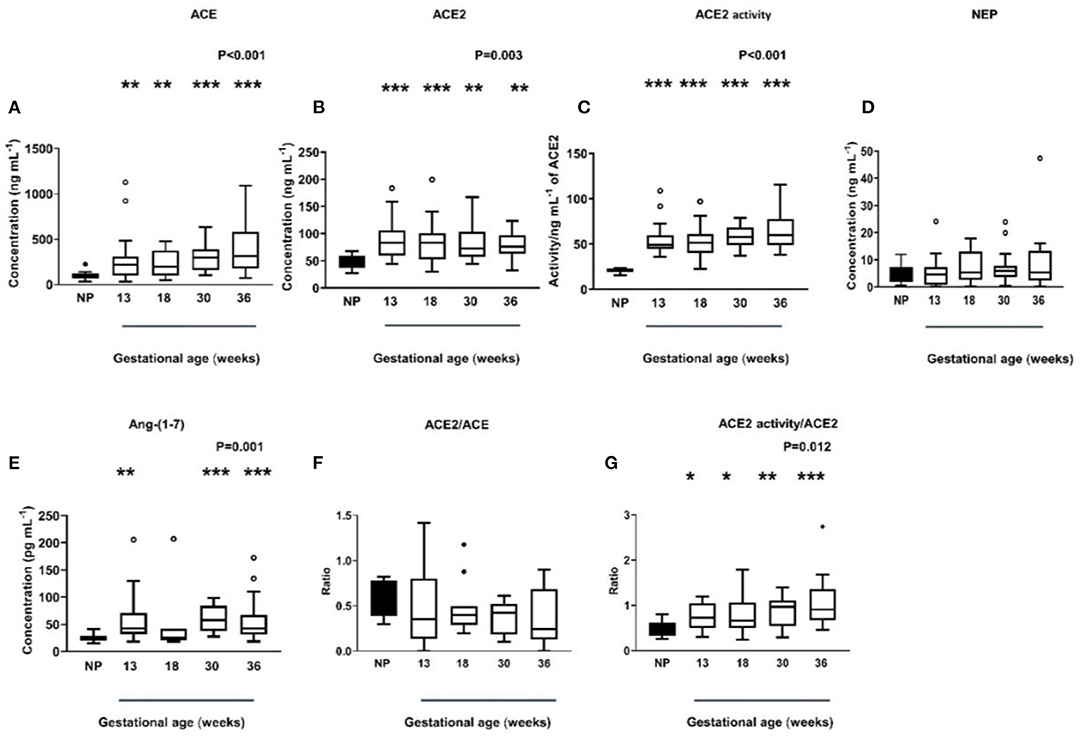
94% of researchers rate our articles as excellent or good
Learn more about the work of our research integrity team to safeguard the quality of each article we publish.
Find out more
CORRECTION article
Front. Physiol. , 20 May 2021
Sec. Developmental Physiology
Volume 12 - 2021 | https://doi.org/10.3389/fphys.2021.692761
This article is a correction to:
Angiotensin Converting Enzyme 2 (ACE2) in Pregnancy: Preeclampsia and Small for Gestational Age
 Sonia Tamanna1,2,3
Sonia Tamanna1,2,3 Vicki L. Clifton4,5
Vicki L. Clifton4,5 Kym Rae5
Kym Rae5 Dirk F. van Helden2
Dirk F. van Helden2 Eugenie R. Lumbers1,2,3
Eugenie R. Lumbers1,2,3 Kirsty G. Pringle1,2,3*
Kirsty G. Pringle1,2,3*A Corrigendum on
Angiotensin Converting Enzyme 2 (ACE2) in Pregnancy: Preeclampsia and Small for Gestational Age
by Tamanna, S., Clifton, V. L., Rae, K., van Helden, D. F., Lumbers, E. R., and Pringle, K. G. (2020). Front. Physiol. 11:590787. doi: 10.3389/fphys.2020.590787
In the original article, there was a mistake in Figure 3A and G as published. In Figure 3A it was written P=0<.001 instead of P<0.001 and Figure 3G it was written P=0.0012 instead of P=0.012. The corrected Figure 3 appears below.

Figure 3. Plasma levels and activity of ACE, ACE2, and NEP in non-pregnant (NP) and pregnant women (A–D). Plasma levels of Ang-(1-7) were measured by radioimmunoassay in NP and pregnant women (E). Plasma ACE2/ACE ratio and ACE2 activity/ACE ratio in NP and pregnant women (F,G). Data are expressed as median and interquartile range. n = 9–10 samples for the NP group (black box), n = 7–35 samples/group for 13, 18, 30, and 36 weeks of normal pregnancy (white box). P-values were calculated using a Kruskal–Wallis test (with Dunn's multiple comparison test). *P < 0.05, **P < 0.01, ***P < 0.001 versus NP.
In the original article, there was an error. In the results section, one of the P-values was stated incorrectly.
A correction has been made to Results, ACE, ACE2, NEP, and ANG-(1-7) levels, ACE2 activity, and the ACE2/ACE ratio in women with preeclampsia, paragraph 2:
“Figure 5E shows the plasma Ang-(1-7) levels in women with normal pregnancies and women with PE. Women with PE had reduced levels of plasma Ang-(1-7) compared with levels in women with normal pregnancies (P = 0.034; Figure 5E). The ACE2/ACE ratio was increased in PE compared with normal pregnancies (P < 0.001; Figure 5F).”
The authors apologize for this error and state that this does not change the scientific conclusions of the article in any way. The original article has been updated.
Keywords: angiotensin converting enzyme 2 (ACE2), angiotensin peptides, preeclampsia, pregnancy, small for gestational age
Citation: Tamanna S, Clifton VL, Rae K, van Helden DF, Lumbers ER and Pringle KG (2021) Corrigendum: Angiotensin Converting Enzyme 2 (ACE2) in Pregnancy: Preeclampsia and Small for Gestational Age. Front. Physiol. 12:692761. doi: 10.3389/fphys.2021.692761
Received: 09 April 2021; Accepted: 16 April 2021;
Published: 20 May 2021.
Edited and reviewed by: Amanda Sferruzzi-Perri, University of Cambridge, United Kingdom
Copyright © 2021 Tamanna, Clifton, Rae, van Helden, Lumbers and Pringle. This is an open-access article distributed under the terms of the Creative Commons Attribution License (CC BY). The use, distribution or reproduction in other forums is permitted, provided the original author(s) and the copyright owner(s) are credited and that the original publication in this journal is cited, in accordance with accepted academic practice. No use, distribution or reproduction is permitted which does not comply with these terms.
*Correspondence: Kirsty G. Pringle, a2lyc3R5LnByaW5nbGVAbmV3Y2FzdGxlLmVkdS5hdQ==
Disclaimer: All claims expressed in this article are solely those of the authors and do not necessarily represent those of their affiliated organizations, or those of the publisher, the editors and the reviewers. Any product that may be evaluated in this article or claim that may be made by its manufacturer is not guaranteed or endorsed by the publisher.
Research integrity at Frontiers

Learn more about the work of our research integrity team to safeguard the quality of each article we publish.